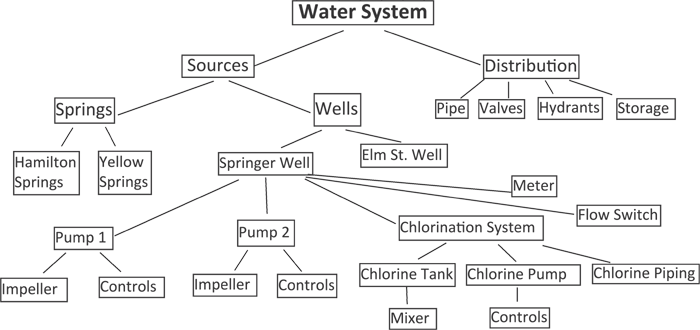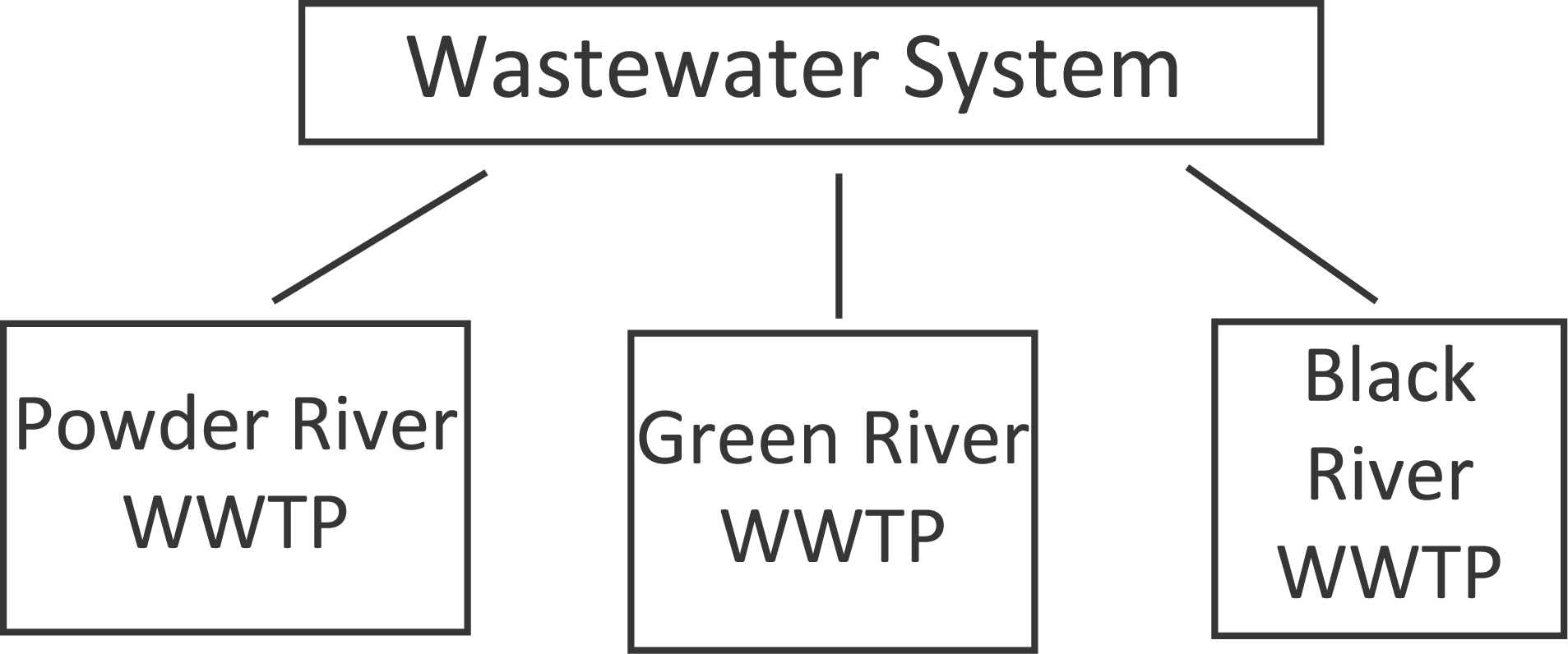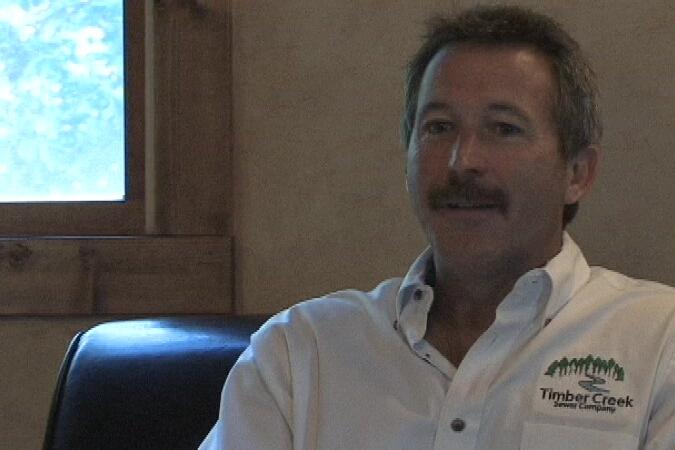3.8.3 Asset Hierarchy: Which Assets Go Together
Within a water or wastewater utility, there are natural groupings of assets. One asset is typically a component of a larger system of assets. If assets are entered into the asset inventory in such a way that these groupings are recognized, it is a lot easier to examine asset data and make decisions about asset repairs and replacements. This type of grouping is called an asset hierarchy. The hierarchy can also be thought of as a tree structure or a parent, child, grandchild structure. An example of a portion of the hierarchy of a water utility is presented below.

The asset at the top of the list is the parent asset, the next level is the child asset, the next is the grandchild asset and so on. If you start at the bottom, assets can be "rolled" up into higher and higher categories until the final level is all of the assets in the water utility (or wastewater utility.) If you have multiple water or wastewater facilities that are completely independent of each other, each one of those can be a parent asset category or the parent can be water (or wastewater) with the child asset the name of each of the independent systems as shown below.

Then all of the assets for each plant can be associated with the individual treatment facilities.
The benefits to an asset hierarchy are to be able to develop costs for groups of assets, such as the total cost of pre-treatment, the total cost of well #1 or the total cost of all wells. If the costs associated with individual assets associated with wells are collected, then the costs of these assets can be rolled up
to obtain the cost of an individual well or all wells.
Within a water or wastewater utility, there are natural groupings of assets. One asset is typically a component of a larger system of assets. If assets are entered into the asset inventory in such a way that these groupings are recognized, it is a lot easier to examine asset data and make decisions about asset repairs and replacements. This type of grouping is called an asset hierarchy. The hierarchy can also be thought of as a tree structure or a parent, child, grandchild structure. An example of a portion of the hierarchy of a water utility is presented below.

The asset at the top of the list is the parent asset, the next level is the child asset, the next is the grandchild asset and so on. If you start at the bottom, assets can be "rolled" up into higher and higher categories until the final level is all of the assets in the water utility (or wastewater utility.) If you have multiple water or wastewater facilities that are completely independent of each other, each one of those can be a parent asset category or the parent can be water (or wastewater) with the child asset the name of each of the independent systems as shown below.

Then all of the assets for each plant can be associated with the individual treatment facilities.



